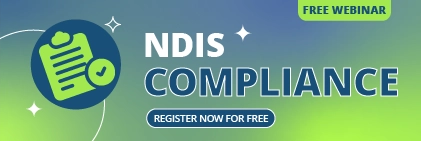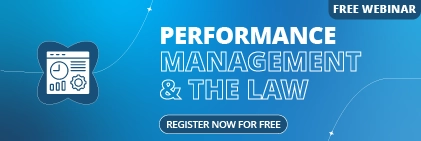Let’s face it, bringing a new employee on board can be a total headache. The endless paperwork, the back-and-forth emails, the forgotten forms… It’s enough to make anyone dread the process. But what if it didn’t have to be that way? What if you could turn that administrative nightmare into a seamless, engaging experience that makes a great first impression?
That’s where a great onboarding management system comes in. It’s not just about getting signatures; it’s about setting new hires up for success and making them feel like part of the team from day one. I’ve done the heavy lifting and researched the ten best systems out there to help you find the perfect one for your business.
1. Sentrient Onboarding Management System
Sentrient is an Australian company that focuses on making HR and compliance easy. Their onboarding system is built to take the pain out of new hire admin, ensuring you’re always on the right side of the law. It is a useful tool for businesses that require consistent compliance.
Key Features:
- Automated Workflows: You can set up the whole process to run independently, from sending out contracts to welcome emails.
- Compliance-Focused: It’s designed for Australian businesses and includes features for digital document signing and secure storage that meet local legal requirements.
- LMS Integration: It works with their learning management system, so you can easily assign induction and training modules.
- Employee Self-Service: New hires can complete all their paperwork and training online, which means less back-and-forth for you.
Integrations: Sentrient’s strength is its complete HR platform, so its various modules (HR, payroll, recruitment) are designed to work together seamlessly.
Pros and Cons:
- Pros: Its focus on Australian compliance is a huge plus. The platform is user-friendly and offers an all-in-one solution for your HR needs.
- Cons: Pricing isn’t listed on their website, so you’ll have to reach out for a quote, which can be a small barrier.
Best Suited for: Any Australian business with strict compliance rules, especially in industries like healthcare or finance.
Pricing: Not publicly listed. You’ll need to contact them for a custom quote.
2. Employment Hero
Employment Hero is a comprehensive platform that’s much more than just onboarding. It’s a complete HR, payroll, and benefits solution. Its onboarding module is a key part of this all-in-one offering, making the transition from new hire to team member smooth and straightforward.
Key Features:
- Paperless Onboarding: Say goodbye to paper forms. New hires can fill out everything from tax declarations to superannuation details online.
- Built-in Modern Awards: This is a big one for Australian businesses. The system includes over 45 modern awards to simplify payroll and ensure compliance.
- Employee Self-Service: A dedicated portal for new hires to access all their info and complete tasks.
- Happiness Surveys: A nice touch that lets you check in on employee sentiment from the start.
Integrations: It integrates with various third-party apps and has its own payroll and benefits features, giving you a unified HR experience.
Pros and Cons:
- Pros: They offer a free plan for basic features, and the all-in-one platform is compelling for businesses. The focus on Australian compliance is a significant advantage.
- Cons: The free plan is limited, and the whole platform might be too much for a tiny business.
Best Suited for: Small to medium-sized Australian businesses that want a single, integrated solution for all their HR and payroll needs.
Pricing: They have a free plan, with paid tiers starting at around $6 per employee per month for more features.
3. FlareHR
FlareHR is another Australian HR platform that emphasises employee benefits and engagement. It’s a great choice if you want to make a fantastic impression on new hires by offering great perks packages from day one.
Key Features:
- Onboarding Automation: It uses customisable workflows and digital forms to reduce manual admin.
- Employee Perks: This is their differentiator. They provide access to various employee discounts and benefits, which can be a huge motivator.
- Mobile-Friendly: New hires can get their onboarding done on the go, from any device.
- Compliance Tracking: Helps you keep track of all the Australian compliance boxes you need to tick.
Integrations: Connects seamlessly with popular payroll systems.
Pros and Cons:
- Pros: It’s designed to boost employee engagement and retention. The interface is also very user-friendly.
- Cons: Pricing can be opaque and usually requires a custom quote.
Best Suited for: Businesses that want to stand out and offer a competitive employee experience with excellent benefits right from the start.
Pricing: Quote-based.
4. EnableHR
EnableHR is a cloud-based people management platform known for its robust legal guidance and resources. It’s the perfect tool for businesses serious about risk management and staying compliant.
Key Features:
- WHS & Compliance: A strong focus on Work Health & Safety and legal compliance gives you peace of mind.
- Document Management: A secure place to store all employee documents and company policies.
- Self-Service Portal: Employees can access their information and complete tasks themselves.
- Automated Workflows: It can automate various HR processes, from hiring to performance reviews.
Integrations: It can integrate with other systems, but is also a powerful standalone HR platform.
Pros and Cons:
- Pros: The built-in legal guidance is invaluable. It’s a reliable platform for businesses in Australia and New Zealand.
- Cons: The onboarding module is part of a larger HR suite, so it might not have as many specific onboarding features as a dedicated tool.
Best Suited for: Companies that need to prioritise compliance and risk management above all else.
Pricing: Around $8 per worker monthly, with custom quotes available.
5. ELMO Software
ELMO Software is a big player in the talent management space. It’s a suite of products, and its onboarding module can be used independently or with other tools. It’s highly scalable and perfect for growing companies.
Key Features:
- Paperless Onboarding: Gets rid of all the physical paperwork with digital forms and contracts.
- Integrated Learning: Connects with ELMO’s Learning Management System, so you can easily assign induction training.
- Customisable Workflows: You can tailor the onboarding journey to fit your company’s needs.
- Centralised Data: All employee information is stored in one place, making it easy to access and manage.
Integrations: Designed to work perfectly with ELMO’s other HR solutions, like recruitment and payroll.
Pros and Cons:
- Pros: It’s incredibly scalable, secure, and configurable. Perfect for businesses that are planning to grow.
- Cons: It’s more of an enterprise-level solution, which might be more complex and expensive for a smaller team. Pricing is quote-based.
Best Suited for: Medium to large enterprises needing a robust, integrated, scalable HR platform.
Pricing: Quote-based.
6. Onboarded
Onboarded is a specialist platform designed to make the onboarding process as fast and straightforward as possible. It’s especially popular with recruitment agencies because it can handle many new hires with minimal effort.
Key Features:
- One-Link Onboarding: This is a fantastic feature. You send the new hire one secure link, and they can complete everything – no usernames or passwords are required.
- Mobile-First Design: It’s optimised for phones, so new hires can even take photos of their documents to upload them.
- Background Checks: Integrates with third-party providers to make background and police checks a breeze.
- Customisable: The flexible platform can be designed to match your specific needs and company culture.
Integrations: Integrates with a variety of recruitment and billing software.
Pros and Cons:
- Pros: It’s swift and efficient. The mobile-first approach is excellent for a positive candidate experience.
- Cons: It’s a specialised tool, so you might need to pair it with another HR system for a complete solution.
Best Suited for: Recruitment agencies, or businesses that hire many people quickly.
Pricing: Based on your volume. Contact them for a demo and pricing details.
7. foundU
foundU is a true all-in-one workforce management platform. It’s built to simplify onboarding, rostering, and payroll, especially for businesses with flexible workforces.
Key Features:
- All-in-One Solution: Onboarding, rostering, and payroll are all in one place, which means no messy data transfers.
- Paperless Onboarding: Digitise all your forms and even run VEVO checks from the platform.
- Award Interpretation Engine: This is a huge time-saver. It automates Australian modern award interpretation, which is excellent for payroll compliance.
- Employee App: An easy-to-use mobile app for employees to manage their shifts and payslips.
Integrations: As a single platform, it’s less focused on third-party integrations but can connect with other HR tools.
Pros and Cons:
- Pros: This powerful, all-in-one system has a fantastic award interpretation engine. It is perfect for complex rostering and payroll needs.
- Cons: The full-featured nature might be more than some small businesses need.
Best Suited for: Hospitality, retail, and other industries with complex rostering and a flexible workforce.
Pricing: Starts from $3.25 per active user per week.
8. Deputy
Deputy is a popular workforce management tool, best known for its scheduling. However, it also offers an HR add-on with a strong onboarding solution, making it a great option if you already use its platform.
Key Features:
- Paperless Onboarding: Streamlines the new hire process with digital forms and secure document storage.
- Integrated with Scheduling: Once a new hire is onboarded, they’re automatically set up in Deputy’s rostering system.
- Employee Feedback: Includes surveys to help you track employee engagement from the get-go.
- Mobile-First: A user-friendly mobile app for both managers and employees.
Integrations: Connects with over 300 apps, including payroll and POS systems.
Pros and Cons:
- Pros: The seamless integration with Deputy’s core scheduling features is a significant benefit.
- Cons: The onboarding is an “add-on” feature, so it might not be as comprehensive as a dedicated tool.
Best Suited for: Businesses in retail, hospitality, and healthcare that need a powerful, integrated solution for both scheduling and onboarding.
Pricing: The HR add-on is around $2 per user per month on top of their core plans.
9. Martian Logic
Martian Logic provides an end-to-end employee lifecycle platform. Their onboarding software is part of a larger suite that manages everything from recruitment to offboarding, giving you a consistent experience across the board.
Key Features:
- Paperless and Automated: Gets rid of all the manual paperwork and uses automated workflows.
- Compliance Management: Ensures all documents and signatures are securely in place for audits.
- Customisable Workflows: You can create onboarding journeys that reflect your company’s unique culture.
- Recruitment Integration: Hired candidates seamlessly transition from the recruitment module to the onboarding process.
Integrations: Connects easily with existing HR tools like payroll and LMS.
Pros and Cons:
- Pros: It’s a complete employee lifecycle solution that ensures all data is consistent. It’s also highly customisable.
- Cons: As a full-featured platform, it may require a larger investment and more time to implement.
Best Suited for: Medium to large enterprises that want to manage the entire employee journey within a single platform.
Pricing: Not publicly listed. Contact them for a quote.
10. The Access Group
The Access Group is a global provider of business management software. Their HR onboarding solution is part of a larger suite designed to automate and streamline people management.
Key Features:
- Personalised Onboarding: You can create custom checklists and welcome pages for each new hire.
- Pre-boarding: It gives new hires access to critical information before they start, so they feel connected from the beginning.
- Offboarding Tools: The system also helps you manage the offboarding process, which is a nice touch.
- Comprehensive Dashboard: A central dashboard lets HR and managers track the progress of every new hire.
Integrations: The various HR modules (recruitment, payroll) are fully integrated.
Pros and Cons:
- Pros: It offers a very engaging and personalised experience for new hires. It also covers the entire employee journey, from pre-hire to offboarding.
- Cons: Pricing isn’t public and generally more suitable for larger corporations.
Best Suited for: Large organisations that need a highly customised and end-to-end solution for people management.
Pricing: Quote-based.
Conclusion
Picking the right onboarding system is a big deal. It impacts everything from how happy your new hires are to how efficient your HR team is. Whether you’re a small business looking for a simple, all-in-one tool or a large company needing a scalable, customisable platform, there’s an option for you. The right choice will save you time and money and help you create a fantastic first impression that keeps your new talent around for the long haul.
Recommendations
- For Australian Businesses Prioritising Compliance: The Sentrient Onboarding Management System is a top-notch choice. It’s built from the ground up for Australian regulations, making it an excellent all-in-one platform for managing HR, payroll, and training with total confidence.
- Employment Hero is a fantastic option for growing businesses on a budget. It offers a free plan and affordable pricing that can scale with your company.
- For Businesses with High-Volume Hiring: Onboarded is the ideal solution. It’s fast, mobile-friendly, and designed to handle many new hires quickly and efficiently.
- For Companies with Complex Rostering: Deputy is perfect if you already use or plan to use their scheduling and time tracking tools, as the onboarding seamlessly integrates with the rest of their platform.
- For large enterprises needing a Custom Solution, ELMO Software provides a comprehensive, secure, and scalable platform that can be tailored to meet the most complex needs of a large organisation.
FAQs
What’s the difference between onboarding and pre-boarding?
Think of onboarding as the whole journey, which can last several months. Pre-boarding is the first step, after accepting a job offer but before the new hire’s first day. It’s all about getting the initial paperwork and communication out.
Can these systems work for my remote employees?
Yes! That’s one of the most significant benefits. Cloud-based onboarding systems are perfect for remote teams because they allow new hires to complete everything online from anywhere.
How much does an onboarding system usually cost?
Prices can vary dramatically. Some platforms offer free plans with limited features, while others charge per employee per month, generally ranging from $5 to $50+. Many enterprise-level solutions require a custom quote.
Are these systems legally compliant?
Most, especially those based in Australia like Sentrient, Employment Hero, and EnableHR, are designed with local compliance in mind. They help you with everything from tax forms to employment laws, giving you peace of mind.
How long does getting one of these systems up and running take?
It depends on the system’s complexity. A simple, standalone tool might be ready in a few days, while a large, integrated platform could take a few weeks to a couple of months to fully implement.
Do these systems integrate with payroll?
Many do, and it’s a huge time-saver. This integration automatically transfers new hire data, helping ensure they’re paid correctly and on time.
What are the main benefits of using an automated onboarding system?
You’ll save a ton of time on admin, reduce the risk of compliance errors, and create a much better first impression for new hires, leading to higher employee retention and productivity.
Can I use a dedicated onboarding system with my existing HR software?
Many dedicated onboarding tools are built to integrate with other HR systems. However, some all-in-one platforms might offer a more seamless experience if you use their entire suite.
What should I look for when choosing a system?
Consider your company’s size, industry, and specific needs. Look for features like compliance tools, customisable workflows, and ease of use. A free trial or demo can also be beneficial.
How can I prove the value of an onboarding system to my boss?
You can show its value by tracking key metrics. Look at how much faster you can hire someone, how much a new hire’s productivity improves, and whether your employee turnover rate decreases after implementing the system.
Read More About Onboarding Management:
- Integrating Compliance Training into Employee Onboarding Processes
- Everything You Need to Know About Employee Onboarding
- Top 10 Employee Onboarding Software Solutions To Streamline New-Hire Integration
- Essential Checklists for Employee Onboarding
- Factors To Consider When Planning The Length Of Your Employee Onboarding Process





